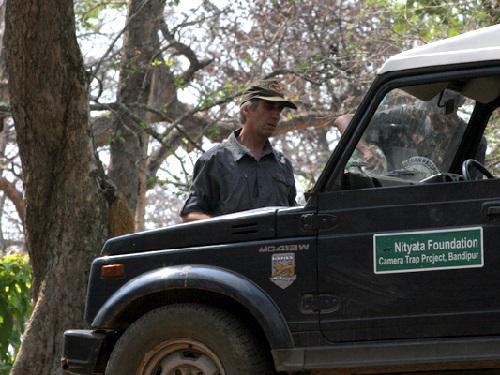H.S. Jamadagni
Fauna and their habitat usage survey through inexpensive digital camera traps in Bandipur Tiger Reserve, southern India

Application of technology in wildlife sciences is an under-explored area. Camera trap technology, in particular, has significant scientific, conservation and management value for a variety of wildlife species, ranging in size from elephants to the smallest mammal or bird. Without human interference in observation, it can aid in mapping the status (number, distribution), habitat usage of various species, especially small, rare, endangered, elusive or nocturnal species, studying their behaviour, working out age and sex class identification for elephant populations, etc. In addition, usage of water holes by wildlife and their management in specific seasons, such as the dry season preceding the monsoon, could be done more scientifically based on an analysis of animal visits to the given water hole through camera trap studies.

Since a few years, researchers at the Centre for Electronics Design and Technology (CEDT) at the Indian Institute of Science (IISc), Bangalore, India, are working on the development and field deployment of camera traps, both film based and digital. The uniqueness of these camera traps lies in their features and the low production cost.
The system is designed around a micro-controller to be able to offer all desired features and also to have the flexibility to respond to requirements specific to each application. Critically, the camera records the time of picture.This work is done in very close collaboration with species specialists and researchers, as we believe that camera traps will yield better results by combining technological and wildlife science/species expertise.
In this project, we shall deploy camera traps for about a year in the Bandipur Tiger Reserve, focusing on the following objectives:
Mapping the status (number, distribution) and habitat usage of small, rare, elusive and endangered animals using camera traps.
Demonstrating the usage of camera traps in identifying different age and sex classes of elephants for population structure and dynamic studies of elephants.
Identifying usage pattern of water holes by different species of animals and developing a strategy for species-specific water hole management for specific seasons.
Sharing the knowledge gained through the camera trap technique, with concern forest departments and local communities who suffer through conflict issues, for a better understanding of the issues involved.